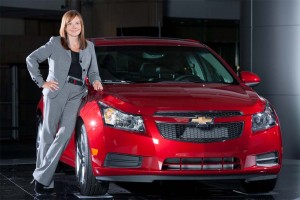General Motors plans to slash by half the number of underlying platforms it uses worldwide by 2018, while ordering a similar reduction in the number of engine variants in its line-up, the maker says.
It’s all part of an effort to reduce costs by as much as $1 billion annually, according to GM CEO Dan Akerson, who says the maker wastes far much time, effort – and money – on projects that either get canceled or which could share their basics with other GM programs.
“We’d be deep — halfway, two-thirds of the way through – on a project and we’d cancel it due to a weakening economy,” said the former Navy officer, who took the helm at GM early last year. “The start-stop, on-again-off-again, herky-jerky nature of our product development process was very disruptive and it produced poor results.”
Indeed, it has meant that many vehicles come out late and then don’t live up to customer expectations, added GM’s new product development czar Mary Barra.
“We end up being second, third, or at the back of the pack,” she said.
Streamlining the product development process has been something GM leaders have promised since well before the automaker’s bankruptcy, but that has given the company new momentum – especially as it watches its competition find ways to sharply improve efficiencies. Ford Motor Co., for example, expects to produce well over a million vehicles off the so-called Global C-Car platform, including the latest generation of the Ford Focus and the new C-Max people mover.
Improving economies of scale is critical to the bottom line, makers like Ford and Nissan looking to sharply drive up margins – even before factoring in increases in sales. GM, on the other hand, is struggling to generate a modest 5% return on its operations, this year, according to research by J.P. Morgan analysts, compared with 10% for industry leaders like Hyundai.
For GM, that means trimming by roughly half the number of so-called vehicle “architectures” it currently relies on — from 30 in 2010 to as few as 14 by 2018. Some of those will still be locally-focused platforms, used for such regional products as the Chevrolet Silverado pickup. But as much as 90% of future GM production will come off a handful of “core” architectures once the process is complete compared to just 31% today.
Meanwhile, the maker intends to slash the number of basic variants that power its various product lines – from 18 today to around 10.
By sharing common platforms and components, GM believes it can achieve massive savings – even while rolling out more products in the future. Since the maker literally won’t have to reinvent the wheel every time it begins work on a new vehicle, Barra estimates it can reduce the manpower needed for a typical project by as much as 25%.
The result, said Dan Amman, the maker’s new chief financial officer, is that GM should be able to achieve a big improvement in its earning without “heroic” efforts. “All the things we to do are,” he stressed, “by and large, within our control.”

